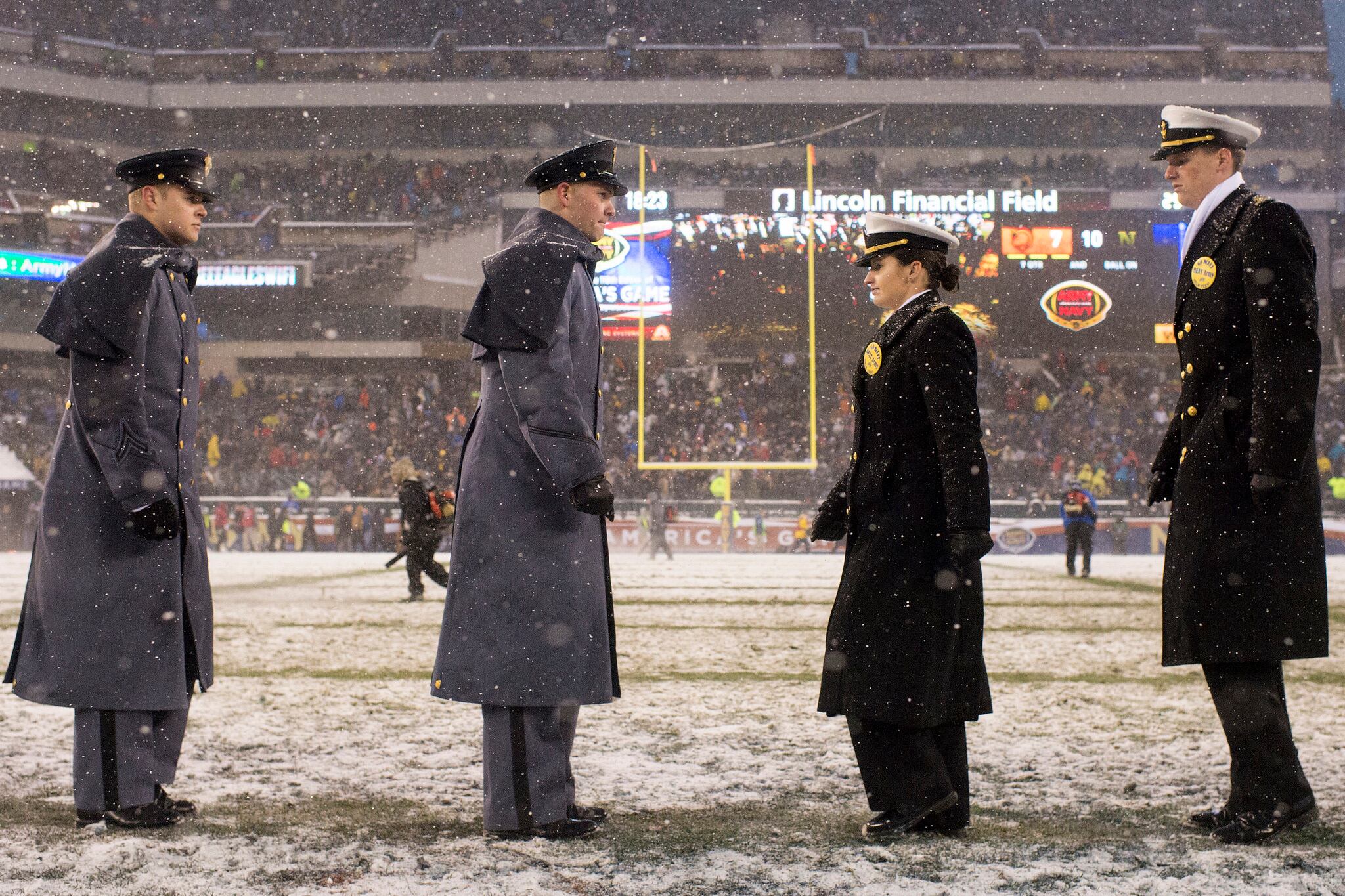PHILADELPHIA — The 119th rendition of the Army-Navy rivalry is just about here. The Army Black Knights (9-2) are looking for their third straight victory over a slumping Midshipmen team that enters the game with just three wins on the season.
With kick-off fast approaching, Military Times spoke with John Feinstein, longtime sports journalist and author of “A Civil War: Army vs. Navy." Feinstein has followed the spectacle surrounding the two rivals for decades, and spoke to the distinctiveness of the historic clash.
WHAT FIRST INTERESTED YOU IN THE GAME AND INSPIRED YOU TO WRITE A BOOK THAT REMAINS POPULAR DECADES AFTER ITS FIRST PUBLICATION?
As a child I watched Army play on TV with my dad, who was an Army veteran. Later, after college I was assigned to cover Navy at the Washington Post.
The first time I saw a game live was the first time I was aware of the alma maters. At the time TV didn’t show the traditions around the game. I wanted to know more about the kids playing.
I first tried to do the book around the 1991 season but ended up covering the 1995 season. That was a dramatic year for both teams and ended [with a final score of] 14-13 with a 99-yard drive late by Army to win.
WHAT IS IT THAT MOVES YOU ABOUT THIS RIVALRY OR MAKES IT SO SPECIAL?
Army-Navy is unique. That’s an overused term — it means one of a kind. There’s nothing else like it.
I’ve seen all sorts of rivalries in sports but nothing gets to me like the Army-Navy game. It’s because of the young men and women in the stadium. Every member of both student bodies are in the stands or on the field.

When they play the National Anthem all of the students salute — if you don’t get a chill, there’s something wrong. Those 8,000 have all volunteered to die for us, if need be.
DECADES AGO, BOTH TEAMS WERE SERIOUS COMPETITORS WITH MAJOR COLLEGE FOOTBALL PROGRAMS. WHILE THERE ARE STILL EXCEPTIONS, THAT’S NO LONGER THE NORM. WHAT CHANGED THAT DYNAMIC?
The change started after Vietnam. A lot of people didn’t want to sign up for the military. And in the era you’re referring to, a military officer made more money than a professional football player. And the academies not only recruit guys who can play football but also who are smart enough and tough enough to play at a military academy. The playing field changed radically over that period.
I think it’s remarkable that in an era where most high school football players aspire to the NFL, that the academies can remain as competitive as they do.
Army scared the heck out of Oklahoma [this year]. And in four of the last 12 years, Navy has beaten Notre Dame. Fred Goldsmith, a former assistant coach at the Air Force Academy used to say the biggest difference is simple – at a civilian school, the hardest part of the football player’s day is football practice. At an academy, the easiest part of the day is football practice.
WITH RIVALRY GAMES, THIS ONE ESPECIALLY, IT SEEMS LIKE THE RECORDS AND STATISTICS DON’T MATTER ON GAME DAY. WHY DO YOU THINK THAT IS?
Bob Sutton, an Army coach in the 1990s who went 6-3 against Navy used to say the more desperate team wins in Army-Navy. Regardless of our record or their record you have to be more desperate. Frequently the underdog wins in this game.
Navy is the definitive underdog entering play today. ESPN’s Football Power Index gives Army a 77.9 percent chance at winning. Kick-off is set for 3 p.m.
Todd South has written about crime, courts, government and the military for multiple publications since 2004 and was named a 2014 Pulitzer finalist for a co-written project on witness intimidation. Todd is a Marine veteran of the Iraq War.





